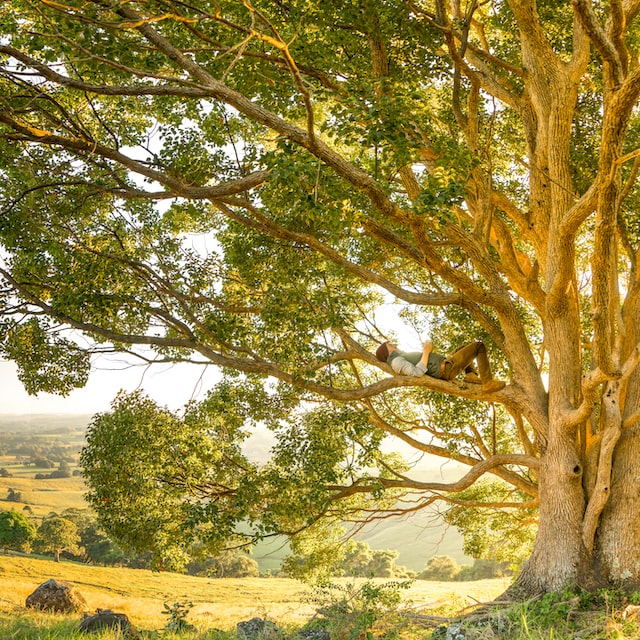In the end, I coukd not resist…I went to see AVATAR 2. Even in 3D! The idea of recalling the sensations I experienced 13 years ago as a spectator of one of the greatest technological advances in animation of the 21st century, won over the laziness of being inside a cinema for a whopping three hours. However, this time I wanted to see how something that already caught my attention in the first film of the saga had evolved: being able to establish a direct link with nature. Amazing!

Having seen the “movie” and coming back to reality, I believe that we have never lost our link with nature but have ignored it thinking that it was no longer necessary for us and that only technological advances would make this world a better place, disregarding our natural essence. It is important to know that any measure developed to protect an ecosystem, and the biodiversity that inhabits it, will protect us as part of that biodiversity and will only improve our living conditions.

Currently there is a growing need to get in touch with nature, either due to being fed up with a sedentary and overly urban life, to practice sports or to come into contact with nature and the trees that inhabit it, but without knowing the multiple benefits that his “forest or nature bath” is providing. Although it is believed that the concept of forest bathing (Shinrin-yoku in Japanese) seems to have an ancient origin, it was not until the early 1980s when the Japanese forest authorities promoted the concept to bring people closer to the benefits of the forest. The feeling of well-being that we perceive walking through the forest has a proven scientific explanation. Already in the middle of the 20th century it was shown that certain conifers were capable of purifying/disinfecting their environment by generating a natural antibiotic (phytoncides), mainly in response to the attack they continually receive from fungi. This has a a direct consequence that the presence of trees in residential areas improves the health of its inhabitants.

There is clear evidence about the essential role that green and blue spaces play in promoting a healthier and more sustainable lifestyle. In urban and peri-urban areas, natural spaces reduce exposure to potentially harmful factors such as excessive heat, noise, and air pollution. Studies have shown that green areas surrounding urban spaces are associated with lower mortality.
Similarly, various experimental and observational studies have shown that exposure to nature is associated with improvements in cognition, brain activity, blood pressure, sleep, physical activity and mental health. Special relevance is given to the improvement of mental health (anxiety, depression and stress) due to activity in nature. An increase in well-designed, equitably distributed adn accesible green/blue spaces, as promoted by the concept of Nature-Based Solutions (NBS), is an important factor in preserving and improving mental health and well-being. The COVID-19 pandemic and the subsequent economic recession have affected the mental health of the population, with an increase un symptoms of anxiety and depressive disorders, and have highlighted the need to improve our understanding of the specific types and characteristics of nature that are key to mental health.
At CARTIF, we have been working for some time on the re-naturalization of our cities, environments and all those inhabited spaces that have lost their natural quality, with the purpose of making our cities more livable…but in a natural way and in coexsitence with nature. Projects like Urban GreenUP, MyBuildingisGreen, NATMED…are a sample of this.
Taking all this into account, the medical prescription of forest bathing, of solutions based on nature or what we have called therapies based on nature (Nature based Therapies) is getting closer.

I recently had the opportunity to talk to Odile Rodríguez de la Fuente, Félix Rodríguez de la Fuente´s daughter, about the bond with nature that her father instilled in her and her sisters and that she still maintains, from her facet as a disseminator of nature, which she performs in a fantastic way. It was undoubtely Félix who perceived the disconnect between human beings and nature at a key moment in the country´s growth, which made his work even more difficult but which has allowed him to leave a deeper and more lasting mark, laying the foundations for the sought-after link with nature.
It is about looking for real and deep connections between the human being and the natural world, which go beyond cultural work in the field or some gardening experiences such as the erroneous perception that tomato plants slowly fatten when being caressed… as if it was a test of love. Nothing could be further from the truth. When you caress a tomato plant every day, its vertical growth slows down and its stem thickens, but it is nothing more than a natural reaction to a fictitious load from the wind.
However, we still have time to protect the nature that surrounds us, to bring nature closer to our cities and living spaces, and to reconnect, to link ourselves with nature.
- Water guardians: innovative strategies to conserve our most precious resource - 24 May 2024
- Recovering our link with nature - 13 January 2023
- The re-naturing of our cities - 22 November 2016
